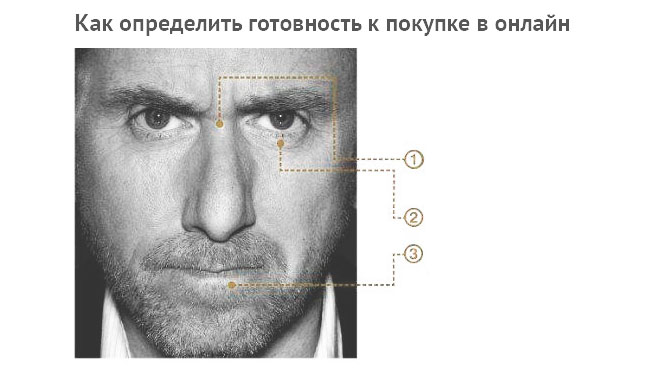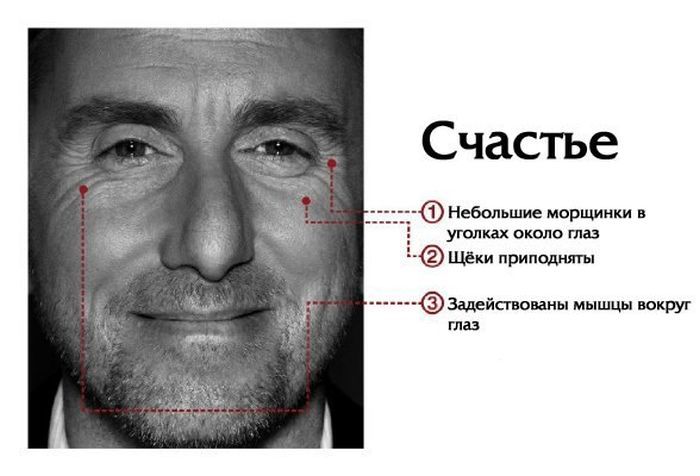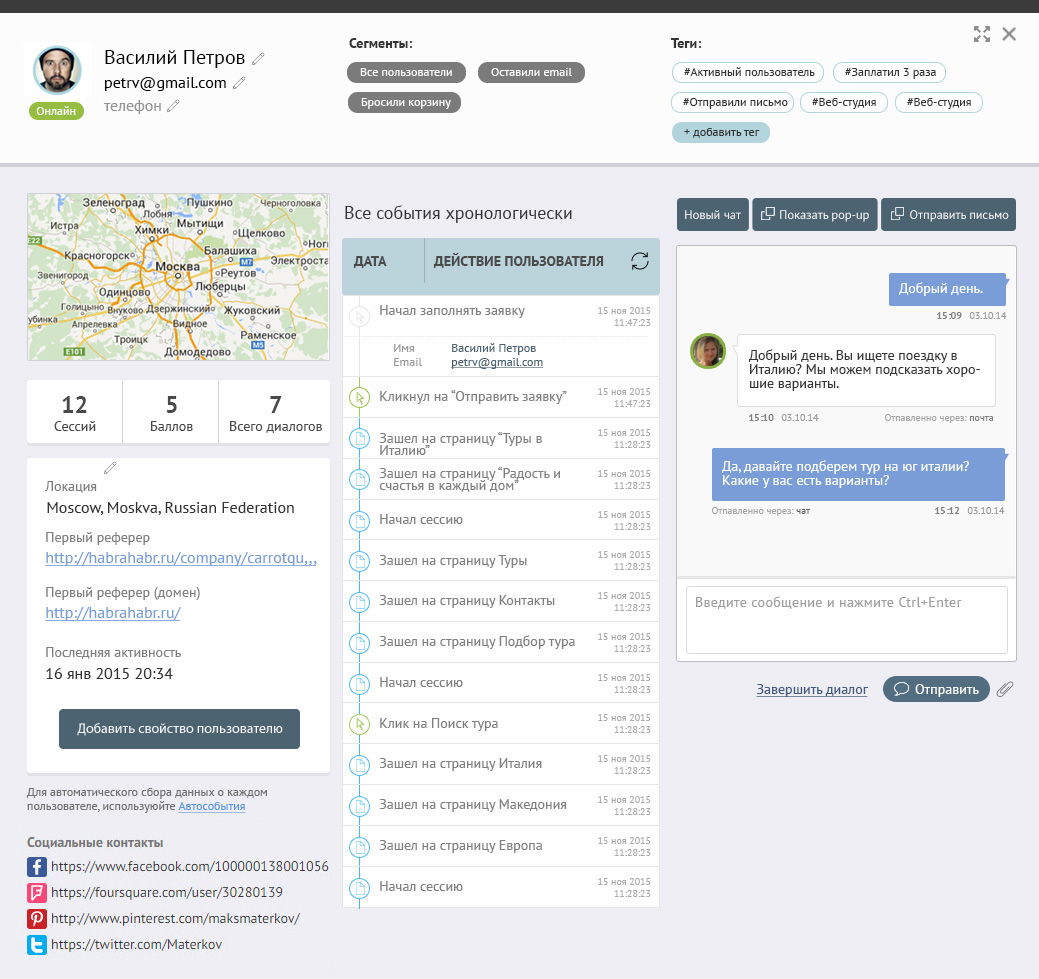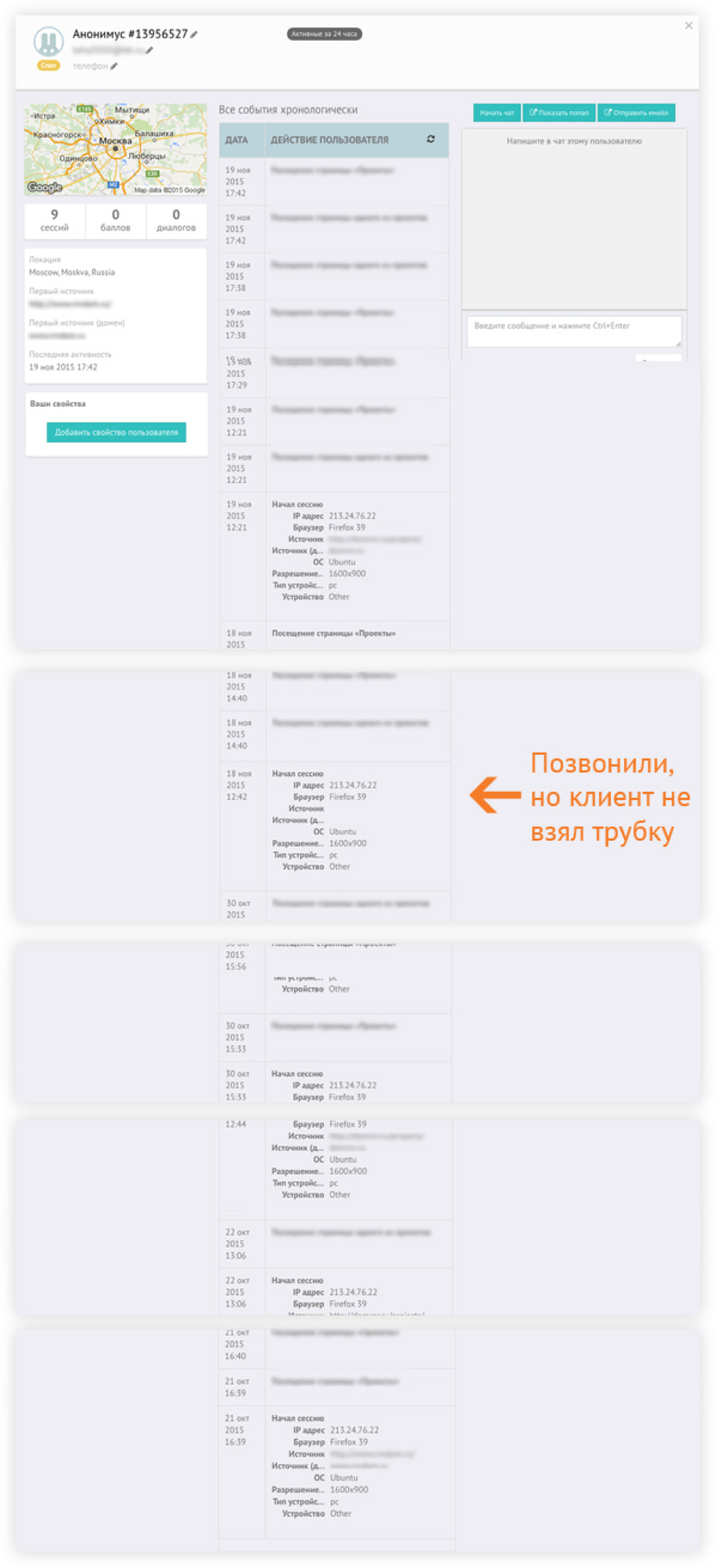Case: How to determine if a lead is ready to purchase without annoying phone calls?

Case "Kongru" on the implementation of personalized analytics system
One of the customers of Kongru sells a large and expensive product (premium furniture). Duration of sale can be from 3 weeks to 1.5 years.
Typical transaction scenario :
- Incoming call from the site (call or request) →
- The first conversation of a sales manager with a potential client →
- Arrangement of the next contact (call, letter, meeting) →
- n-th number of contacts →
- Make a deal
The main problem at the intermediate stages of the transaction is the inability to link the data between the online activity of the website visitors and the communication with the sales manager. This was the main task.
')
In psychology, there is the concept of “ body language ” - the science of how to understand a person’s condition by its external manifestation (facial expression, posture, gestures).

In Internet marketing, there is also a “ digital body language ” - a personalized analyst . You evaluate the interests of each user, his motives and willingness to purchase.
This can be understood from the following data (we analyze in detail below according to the case):
- The number of site visits by a specific user;
- Sources of visits (from which channels he came to the site);
- The route and activity of the user on the site (which pages and how many times he visited before contacting the company).
Yandex.Metrica and Google.Analytics provide only general data (all clicks, views, visits) —they will not help us. What is needed is a personalized analyst for each visitor.
Plus, one difficulty was added to the task: 80% of calls to the company are calls, not filling out forms on the site. To obtain data about visitors who made the call, integration with the Russian call-tracking system was required (the company has been using the Alloka service for 1.5 years already ).
Integrating the Western system with Russian call tracking is an extremely time-consuming task. Therefore, an alternative was found - the Russian-language service of personalized analytics Carrot Quest , which provided integration with Alloka.
In addition to collecting information about users, CarrotQuest has tools that help both automatically and manually guide the user to the purchase (online chat, email newsletters, pop-ups).
The result of the integration: as soon as the message from the lead arrives (a phone call or a filling in the form on the website), all information on the given lead is immediately displayed.
The principle of operation of the integration is shown below:

Key benefit : from all the leads, you can select a segment of those who return to the site (either alone or after calls and letters from company managers). After the user's actions, the data from the CarrotQuest is also loaded into the personal card in CRM.
Thus, from the entire base of leads one can single out the most interested audience . This increases the efficiency of the sales department - specialists work with an already “heated” audience, not wasting time on those who are not yet ready to purchase (this segment has yet to be involved and bring to the point of purchase).
For each lead, personal work is carried out based on the data obtained. For example, one of the users constantly came to the company's website from a website selling luxury cars. In correspondence with him, the manager used comparisons with the purchase of an expensive car, this brought results.
Here's what a user's card looks like in Carrot Quest:

Result: out of 400+ leads who planned to make repairs and order furniture in 2016, for the first month of using this system, 70 leads were identified that are really interested in making a deal.
At the same time, without analyzing the activity of the lead on the website, it is much more difficult to identify this interest - clients often do not pick up the phone or ask to call back later (since they are not comfortable talking). And a purchase offer, when the user is not ready for it at all, can only push aside. Reading letters and repeated visits to certain pages of the site indicates an interest in the purchase as a whole, and in the company itself.
For example, thanks to Carrot Quest, a lead was revealed that was about to visit the company's office, but did not arrive at the meeting .
He was sent a letter, which he opened and moved to the site via the link inside. After 15 minutes, the manager called him, but the client did not pick up. Nevertheless, the client continued to study the site both on the day of the call and the next day. Thus, his interest was confirmed.

After this, individual work was carried out - letters with case studies were prepared that meet the needs of the client. Letters were sent at intervals of 4-5 days. According to the statistics of the discoveries of letters and visits to the site, it became obvious that this lead has a great interest in the transaction.
Already after such an “art preparation” a special offer was sent - they offered exactly the collection of furniture that he regularly watched on the site.
The result - the next day after receiving the letter, the lead independently called the manager and asked to draw up the contract . From the moment of the first call to the conclusion of the transaction, 2 months passed, while the main communication was conducted through an e-mail newsletter, which was read by a potential client (he rarely and reluctantly answered phone calls).
Important: when you identify certain patterns - which scenarios and communications work best for a particular segment (conversion to purchase is high), you can automate the entire process. In CarrotQuest, you can do trigger messages with fine-tuning the audience, then the service will automatically bring some segments to the purchase.
Source: https://habr.com/ru/post/298548/
All Articles